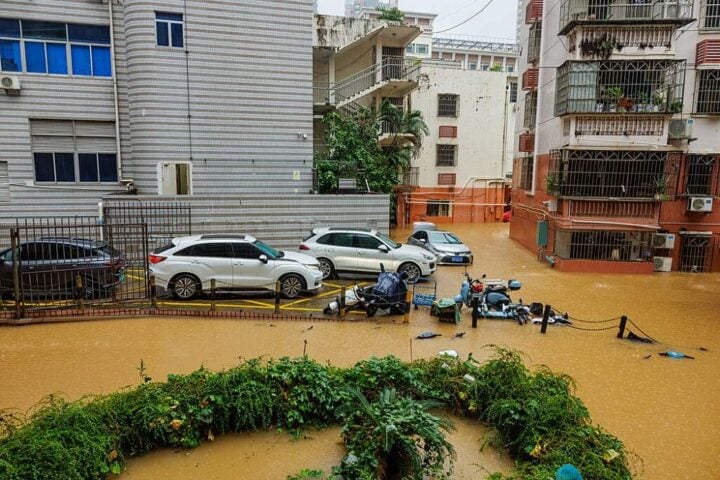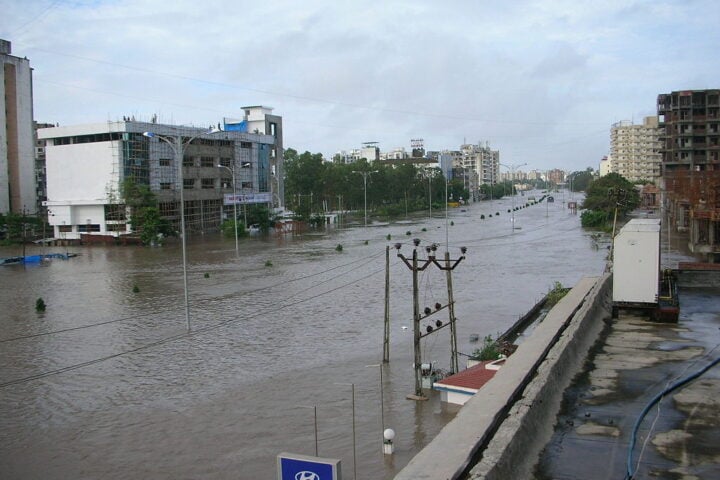The Panama Canal, a critical global trade route, faces its worst drought in a century due to climate change, leading to a massive traffic jam of 200 cargo ships. Historically one of the world’s wettest regions, Panama has seen increasing droughts, with severe episodes in 2016 and 2019, each more intense than the last. The canal’s operation relies heavily on vast water supplies, which are dwindling amidst the current dry spell. Climate change is intensifying extreme weather events worldwide, from droughts and floods to hurricanes, with the Panama Canal being a notable victim.
The canal’s significance is underscored by its handling of 40% of U.S. container traffic, representing $270 billion in cargo annually. A similar traffic disruption occurred two years ago when a single ship blocked the Suez Canal, causing global shipping chaos. The Panama Canal’s current vessel backlog is having a ripple effect on businesses, communities, and homes dependent on the daily flow of goods through the waterway.
The canal’s design includes locks that raise ships to the Gatun Lake’s level, 85 feet above sea level, using vast amounts of water, now in short supply. At its peak, the canal requires over 50 million gallons of water daily, emphasizing the gravity of the current water shortage. Since its inauguration in 1914, the canal’s traffic has surged, with over 14,200 ships crossing in the 2022 fiscal year alone. Conservation efforts have led to increased fees for cargo vessels, with the canal operating at a reduced capacity, allowing only 32 ships per day.
The average wait time for ships has soared to 20 days, with potential restrictions lasting throughout 2023, translating to a revenue loss of around $200 million. Canal administrator Ricaurte Vásquez Morales emphasized the dire need for adaptation, stating, “If we don’t adapt, we are going to die.” The canal’s depth restrictions have been adjusted due to the drought, with ships having hulls deeper than 43.5 feet now required to offload some cargo. These depth restrictions aim to prevent incidents similar to the Suez Canal blockage, which halted $10 billion in daily trade.
Similar Post
The Panama Canal facilitates 3.5% of global trade, making it indispensable for international commerce, especially U.S. liquefied natural gas exports to Asia. Droughts that once occurred every five years at the canal are now more frequent, challenging its smooth operation. Current data reveals around 150 ships in queue, with waiting times peaking at 21 days, a sharp rise from the 15-day wait at the start of August. The congestion has affected various shipping sectors, with dry bulk congestion reaching its highest in eight years.
Alternative routes, such as the Suez Canal or circumnavigating Africa, are being considered by container carriers to bypass the Panama Canal’s delays. Shipping experts suggest that the backlog could take months to clear, urging carriers to plan their routes accordingly. The canal’s future remains uncertain, even as rains return to Panama, due to the anticipated dry effects of the El Niño weather phenomenon later this year. The canal authority projects a potential revenue loss of up to $200 million for the upcoming year if the current conditions persist.
The canal’s depth has been incrementally reduced from the usual 50 feet to prevent potential blockages. Vessel tracking data indicates some relief from congestion, but clearing the backlog remains a challenge, with hopes pinned on increased rainfall. The drought’s impact extends beyond container ships, affecting bulk carriers, tankers, and other vessel types. Analysts warn of Atlantic coal-laden ships deviating from their preferred Panama Canal route due to increasing transit times. The canal’s significance is further highlighted by its role as a major conduit for international container shipments and U.S. natural gas exports to Asia.
As the global climate continues to change, the Panama Canal’s challenges underscore the broader implications for trade, economies, and communities worldwide.


















